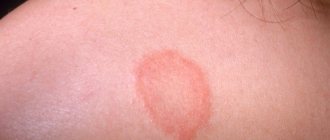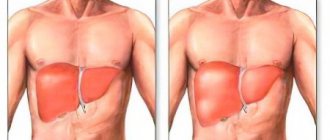The urethra is a canal in both men and women that is used to remove urine and semen (in men). Discharge from the urethra is physiological in nature, since it involves the natural release of biological fluid. However, there are a number of pathological conditions in which discharge from the canal is not natural and warns of the presence of inflammatory processes in the genitourinary system.
It is quite easy to distinguish the former from the symptoms of the disease: they are not accompanied by unpleasant sensations, do not have bloody or purulent impurities and do not smell. In contrast, an atypical secretion may have various impurities, including blood, have a cheesy consistency, and have an unpleasant smell. They require immediate professional medical help. You can get it at the CELT multidisciplinary clinic: our specialists will make every effort to correctly diagnose and prescribe appropriate treatment. They have everything they need to make it successful: patients only need to contact us in a timely manner to avoid the development of serious complications.
At CELT you can get advice from a gynecologist.
- Initial consultation – 3,000
- Repeated consultation – 2,000
Make an appointment
Discharge from the urethra: types and causes
It is customary to distinguish physiological and pathological discharge from the urethra. Isolation of the former is a natural process and does not require treatment or medical supervision. They are presented in our table below:
| Physiological discharge from the urethra | What is it when it occurs? |
| Urine | It is a product of human activity in the form of liquid, which is excreted by the kidneys. Normally, it is yellowish in color, transparent, almost odorless and does not contain any inclusions or impurities; it consists of 99% water. |
| Transparent discharge from the urethra in women | The glands of the urethra produce a small amount of transparent secretion, which acts as a lubricant and prevents the penetration of pathogenic microorganisms into it. |
| Smegma in men | The mixture of secretion from the sebaceous glands of the foreskin in the form of a white thick lubricant requires personal hygiene and regular removal with plain water. In large accumulations, it acquires a greenish tint and can lead to the development of inflammatory processes. |
| Ejaculate in men | The fluid that is released during ejaculation. It has a light gray color, is distinguished by viscosity and turbidity. |
| Prostate secretion in men | The liquid appears as a result of the activity of the prostate glands and is part of the sperm. It has a characteristic odor and ensures the fertilizing ability of sperm. |
Pathological discharge requires timely treatment and differs from natural:
- volume - too abundant or, on the contrary, scanty;
- appearance - cloudy, white, yellow-green;
- the presence of impurities - purulent inclusions, lumps of mucus, blood;
- smell - putrid, sour, fishy;
- thickness - too thick or liquid, sticky;
- systematic: constant or episodic.
The causes of such urethral discharge are presented in the table below:
| Kinds | Causes | |
| Infectious etiology | Specific | Diseases that are sexually transmitted |
| Nonspecific | Microorganisms that cause infectious urethritis | |
| Allergic reactions | Prolonged exposure to allergen | |
| Non-infectious etiology | Constrictions of the urethra | Injuries and advanced diseases |
| Violation of the integrity of the mucosa | Impacts of mechanical nature | |
| Irritation | Exposure to chemicals | |
The nature of pathological discharge often makes it possible to recognize the cause that caused it:
| Nature of the discharge | What disease resulted from |
| White discharge from the urethra | Pathological white urethral discharge can occur in both men and women. They are a symptom of the following diseases:
|
| Bloody discharge from the urethra | Such pathological discharge occurs when:
|
| Purulent discharge from the urethra | They have a strong smell of rot, have a greenish or yellowish tint and are a sign of sexually transmitted diseases. |
| Clear and yellow discharge from the urethra | Some forms of chronic urethritis are accompanied by the release of a clear secretion, which can become yellowish during exacerbation. They can also signal the presence of a disease such as trichomoniasis, which is accompanied by discomfort when emptying the bladder. |
It is important to understand that the nature of discharge from the urethra directly depends on a number of factors:
- pathogen;
- presence of other diseases;
- neglect of pathological processes;
- severity of inflammation.
General information
The basis of salivary fluid is 95% water, the remainder is represented by a multicomponent complex of enzymes, proteins, trace elements and acidic salt residues.
A special role in the composition is played by the organic enzymes maltase and amylase, which contribute to the breakdown of pieces of food immediately after it enters the digestive system. The enzyme lysozyme controls the normal balance of microflora, and mucin, which produces foamy saliva, envelops the food bolus for successful digestion in the future.
Saliva plays an important role in digestion.
Thanks to the last component, food moves smoothly down the esophagus into the stomach, where it is processed into small components. Thus, the thickness of saliva should be sufficient for the normal functioning of the digestion process.
Discharges of a non-infectious nature
There are a number of diseases of non-infectious etiology, one of the symptoms of which is discharge from the urethra:
- Urolithiasis - the canal is injured when stones pass from the bladder, which leads to the appearance of blood in the discharge and urine. If an inflammatory process has begun in the damaged area, an odorless white mucous discharge appears from the urethra, which is accompanied by burning and itching during emptying of the bladder;
- Allergic reactions to the material from which underwear is made, hygiene products, as well as pharmacological drugs or food. As a result, clear, intense discharge occurs that does not smell and is accompanied by swelling, itching and discomfort when emptying the bladder;
- Neoplasms of a benign or malignant nature, localized in the bladder or urinary canal, lead to the appearance of bloody or brown discharge;
- Injuries sustained during medical procedures or sexual intercourse. Incorrect selection or violation of the catheter insertion technique can cause damage to the walls of the urethra, which leads to the appearance of pathological discharge.
Where does mucus come from in urine?
The epithelium of the urinary tract includes goblet cells. They are located along the ureters, bladder, and urethra. It is these cells that produce a special mucous substance. Goblet cells essentially perform the function of a gland.
The process of mucus reaching the surface goes through successive phases:
- synthesis of secretion within protoplasm;
- restoration of the working state of the cell;
- accumulation in the cell of initial products from organic and inorganic substances;
- accumulation, “packaging” in the form of vacuoles with movement towards the top of the cell;
- secretion - the vacuole fuses its membrane with the cell wall and forms a pore or temporary passage through which the contents come out.
Properties of mucus:
- protection of the epithelium from the effects of urea and acidic waste products;
- retention of harmful particles, bacteria and viruses in the urine through adhesion.
There is always a small amount of mucus in the urine (urine). It is proportional to the release of urea and reduces the irritating effect of this substance. It is impossible to visually detect the presence of mucus in small quantities. This requires a urine test with microscopic examination.
Mucus in the urine begins to be secreted and detected after urination during the rejection of epithelial cells caused by pathological reasons.
Discharge from the urethra: diagnosis
Diagnosis of discharge from the urinary canal involves the following:
- Medical examination of the perineum/penis to identify rashes, discharge or injuries to the penis;
- Conducting palpation and assessing the density, size and mobility of the lymph nodes in the groin;
- Conducting a digital examination of the prostate in men to obtain secretions and examine them;
- Collection of smears from the urethra for laboratory tests;
- Urethroscopy to assess the condition of the canal mucosa;
- Ultrasound examination of the pelvic organs;
- General blood and urine analysis;
- CT scan.
What does mucus in a child's urine mean?
Mucus in the urine of children indicates the presence of inflammatory diseases of the urinary tract or the fact that genitourinary hygiene is not observed. To prevent the analysis from showing pathology, you need to wash your genitals well before collecting urine for analysis. Mucus appears if the child delays urination. If the delay in the urge to urinate is eliminated, the urine becomes normally transparent.
In boys, mucus in the urine appears as a result of phimosis, a narrowing of the external opening of the foreskin. Under these conditions, bacteria develop on the penis, leading to inflammation. In girls, it appears mainly due to the anatomical features of the structure of the urethra and due to improper washing.
Remember that girls get sick much more often than boys due to the wide and short urethra, which creates favorable conditions for the development of bacteria. Children's urinary tracts are vulnerable and susceptible to inflammation.
Discharge from the urethra: treatment
The treatment method in this case directly depends on the cause that caused such a phenomenon as pathological discharge from the urethra. It is important to understand that self-treatment can cause complications and is therefore unacceptable. Discharge can occur due to the penetration of various types of pathogens, which must be combated using different methods. Most often, drug therapy involves the use of antibiotics, but their selection should be carried out on an individual basis. As a rule, the following means are used:
| Group | When to use | Name |
| Antibacterial | STD | "Azithromycin", "Amoxiclav" |
| Uroseptics | Urethritis | A solution of chlorhexidine and collargol |
| Sulfanilamide | When bacteria that cause inflammation are detected | "Doxycycline" |
| Antimicrobial | Trichomoniasis | "Metronidazole" |
In addition, patients are recommended to wash their genitals with decoctions of knotweed, chamomile, calendula or special antiseptic solutions. Warming applications and electrophoresis give good results.
Tips for taking the test
How to properly collect urine for testing? Here are some useful tips:
- Be sure to wash yourself thoroughly, rinsing your genitals. Usually men think that it is enough for them to just rinse off. This is wrong. Men need to lift the flesh on the organ and remove any remaining smegma.
- You need to make sure the dishes are clean. If it is a jar of mayonnaise or juice, then it should be thoroughly washed to remove the original product. It is advisable to purchase a special container for collecting the analysis.
- The first portion of urine is drained past the container. It is she who carries a large amount of mucus in the urine. Do the same with the last portion. Just a few drops are enough.
- The urine is then collected into a container without touching the body to avoid sweat, fat and epithelium getting into it.
The most reliable urine test is one done within 2 hours after.
Prevention
A healthy lifestyle is a prevention against many diseases, and those that cause pathological discharge from the urethra are no exception. That is why preventive measures in this case are as follows:
- A balanced diet, minimizing the consumption of fatty and spicy foods, preservatives and carcinogens, which create a serious burden on the kidneys and bladder;
- Eliminating the risk of body hypothermia by wearing warm, comfortable clothing that reliably protects the lower body during the cold season;
- Elimination of stressful situations and excessive physical activity;
- Quitting consumption of alcoholic beverages and smoking;
- Compliance with personal hygiene rules;
- Refusal to wear underwear made of synthetic materials that can cause an allergic reaction.
Contact the specialists of the CELT clinic when the first symptoms of the disease appear: your treatment will be even faster and more successful if it is started in a timely manner. Save yourself the discomfort: contact CELT!
Make an appointment through the application or by calling +7 +7 We work every day:
- Monday—Friday: 8.00—20.00
- Saturday: 8.00–18.00
- Sunday is a day off
The nearest metro and MCC stations to the clinic:
- Highway of Enthusiasts or Perovo
- Partisan
- Enthusiast Highway
Driving directions
Found mucus in urine during pregnancy
The detection of mucus in the urine of pregnant women can be caused by infectious diseases (urenoplasma, chlamydia, mycoplasma). Such diseases can negatively affect not only the woman’s health, but the child’s condition.
Also, mucus in the urine may appear due to disruption of the kidneys, since in the body of a pregnant woman they begin to work harder. A woman’s diet during this period may affect urine analysis: consuming fatty foods in large quantities leads to an increase in cholesterol, and the urine becomes cloudy in color, a pungent odor and mucous inclusions appear.
In healthy women, urine is pale yellow and odorless. White bread, sweets, pork, and poultry make the urine richly yellow, it acquires a characteristic odor, and mucous formations may appear, which indicates an unbalanced diet. In this case, the test results do not indicate a specific disease or poor hygiene. A specialist may advise including more fermented milk products, milk, black bread, vegetables, and porridge in your diet.











